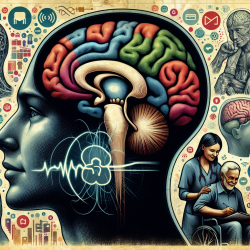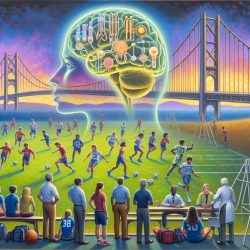Introduction
Non-progressive dysarthria is a motor speech disorder that often results from stroke, leading to impaired speech intelligibility and affecting psychological well-being and quality of life. A recent systematic review titled "Neuroanatomical regions associated with non-progressive dysarthria post-stroke: a systematic review" sheds light on the specific brain regions linked to this condition, providing valuable insights for practitioners aiming to improve therapeutic outcomes.
Key Findings from the Research
The systematic review analyzed data from 24 studies involving 1150 post-stroke subjects, of which 420 had dysarthria due to isolated lesions. The findings highlighted the following neuroanatomical regions associated with dysarthria:
- Supratentorial Regions: Dysarthria was linked to lesions in the motor cortex, middle cerebral artery cortex, internal capsule, corona radiata, and striatocapsular area.
- Infratentorial Regions: The pons, cerebellum, midbrain, and medulla oblongata were identified as critical areas where lesions could result in dysarthria.
The majority of dysarthric subjects with ischemic strokes had pontine infarctions, followed by those in the corona radiata and cerebellum.
Clinical Implications
The identification of these neuroanatomical regions has significant implications for clinical practice:
- Early Detection: Understanding the specific brain regions associated with dysarthria can aid in the early detection and diagnosis of the condition post-stroke.
- Targeted Interventions: Speech and language therapists can tailor interventions based on the location of the brain lesion, potentially improving therapeutic outcomes.
- Comprehensive Assessments: Incorporating neuroimaging techniques such as MRI and CT scans can enhance the assessment process, providing a clearer picture of the lesion's impact on speech functions.
Encouraging Further Research
While this review provides a foundational understanding of the neuroanatomical correlates of dysarthria, further research is encouraged to explore:
- The recovery patterns of dysarthria post-stroke and the factors influencing recovery.
- The role of lesion laterality in the severity and manifestation of dysarthria.
- Comparative studies on dysarthria resulting from other central nervous system diseases.
Conclusion
This systematic review represents a crucial step toward establishing a comprehensive neuroanatomical model of dysarthria. It underscores the importance of integrating neuroanatomical insights into clinical practice to enhance the early detection and management of dysarthria post-stroke.
To read the original research paper, please follow this link: Neuroanatomical regions associated with non-progressive dysarthria post-stroke: a systematic review.










